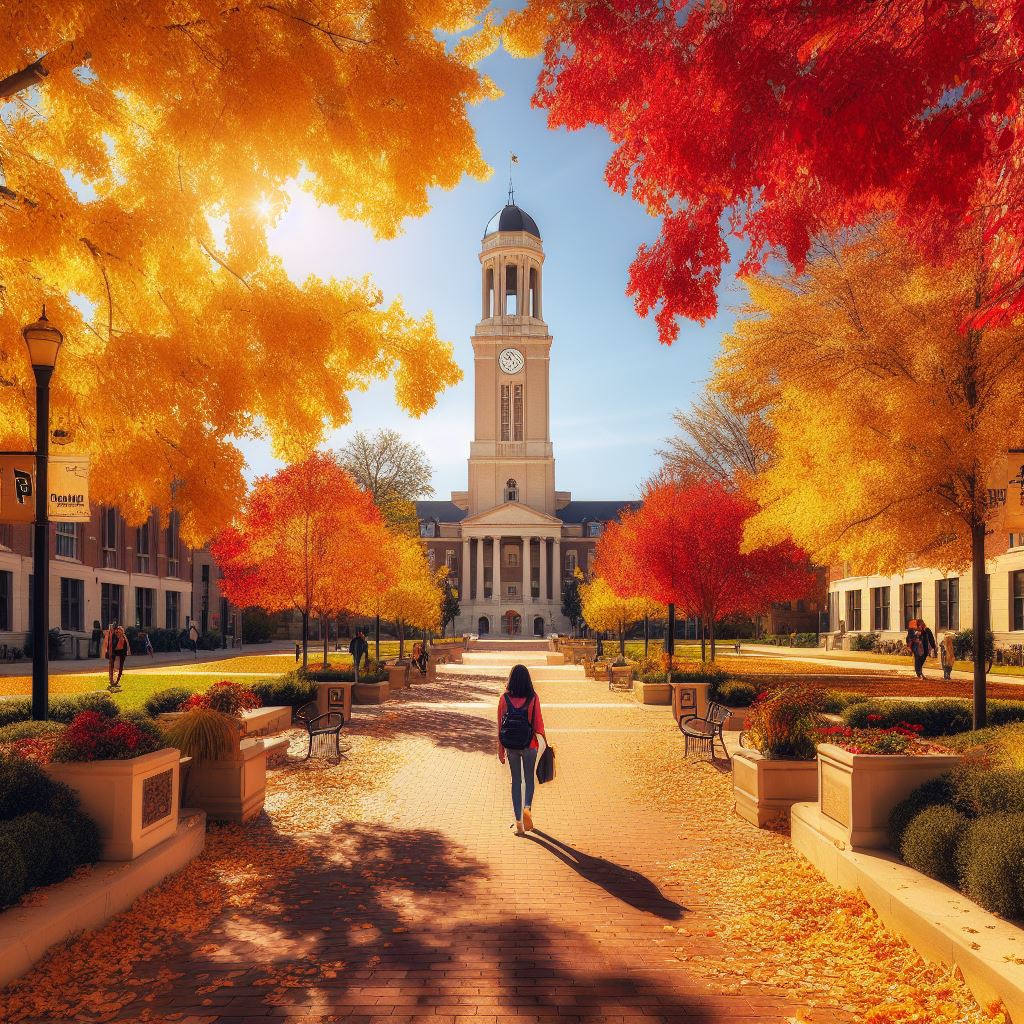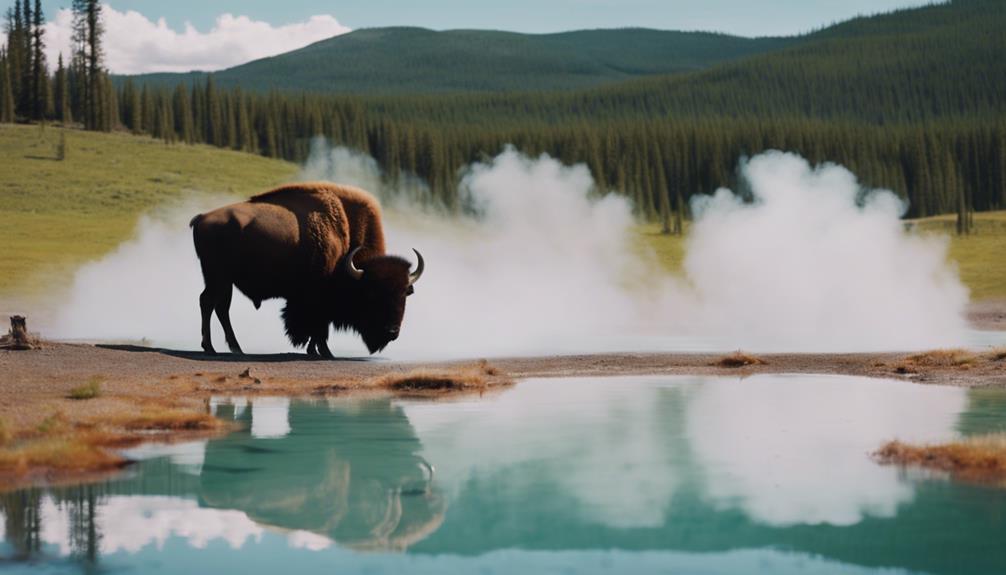Introduction
Fun Facts About Purdue University abound on this storied campus. From pioneering firsts to beloved traditions, discover surprising trivia about one of America’s top public universities. This guide uncovers must-know history, achievements, and secrets behind the Boilermaker spirit!
Brief Overview of Purdue University History and Significance
Purdue University, located in West Lafayette, Indiana, is one of the premier research universities in the United States. Founded in 1869 as a land-grant university under the Morrill Act, Purdue is renowned for its excellent engineering, technology, and science programs.
The university bears the name of John Purdue, a generous benefactor and successful businessman who donated land and cash amounting to $150,000 to establish the university. Thanks to his contribution and support, Purdue became one of the leading agriculture and engineering universities in the country.
Purdue is now the largest single-campus university in the United States, with over 44,000 students. Purdue’s main campus occupies 2,468 acres in West Lafayette, complete with world-class classroom facilities and state-of-the-art research laboratories.
Over its 150+ years of history, Purdue has produced many distinguished alumni and researchers, including Neil Armstrong, the Purdue aeronautical engineering graduate who became the first man to step foot on the moon. Purdue is also known for its groundbreaking research in agriculture and aerospace engineering.
With the motto “Educating Doers and Thinkers for the Benefit of Humanity”, Purdue continues to be a world-class educational institution focused on multidisciplinary research and project-based learning. Let’s look at some interesting facts about the history and legacy of this storied university.
Purdue was an early pioneer in aviation education, establishing the first four-year aeronautical engineering program in the United States. Many Purdue alumni were trailblazers in aerospace research and discovery.
The Purdue Research Foundation, formed in 1930, was instrumental in helping commercialize many faculty inventions and innovations, leading to significant technological advancements. It gave rise to over 100 start-up companies and 9,000 patented technologies.
Notable Purdue landmarks include the Bell Tower and Engineering Fountain. The Bell Tower, built in 1995, is considered the “heart of campus”. The Engineering Fountain was created in 1937 to symbolize science and industry.
Purdue’s libraries hold around 3 million volumes, with 70 thousand rare manuscripts and books. The Virginia Kelly Karnes Archives and Special Collections Research Center preserves Purdue’s history.
![Ultimate Guide to the [Best Fun Facts About Purdue University] You Need to Know Now](https://factnight.com/wp-content/uploads/2023/11/Ultimate-Guide-to-the-Best-Fun-Facts-About-Purdue-University-You-Need-to-Know-Now.jpg)
Home to over 900 student organizations, Purdue offers diverse on-campus activities. Annual highlights are events like Spring Fest and Boiler Gold Rush that showcase Purdue spirit and tradition.
Notable Facts About Purdue University
Founding and History
Purdue University has a long and storied history since its founding as a land-grant institution in 1869. Named after its greatest benefactor, Purdue has grown into one of the nation’s foremost universities known for engineering, agriculture, and scientific research.
Founded in 1869 as a land-grant university
Purdue originated as the Indiana’s land-grant university under the Morrill Act of 1862. The act granted states public land to establish colleges specializing in agriculture, science, and engineering. These colleges aimed to provide greater access to higher education for the working class.
Indiana selected the city of West Lafayette along the Wabash River as the site for its new technical institute. The Indiana General Assembly accepted a donation of land and funds from local businessman John Purdue and officially founded Purdue University in 1869.
Named after benefactor John Purdue
Purdue University bears the name of its greatest supporter, John Purdue. Purdue was a wealthy merchant and industrialist who made his fortune in real estate, agriculture, and railroad development.
In 1862, Purdue provided the initial donation of $150,000 plus 100 acres of land to jumpstart the formation of a “literary, scientific, and agricultural” college in Indiana. He later bequeathed an additional $600,000 to the university upon his death.
First classes held in 1874
After several years of planning and construction, Purdue University first opened its doors to students in 1874. 39 students were enrolled in the first semester alongside six faculty members.
First classes were temporarily held in local churches, courthouses, and schools until the first Purdue building, University Hall, was completed in 1877. This building housed all academic activities and administration for the next two decades.
Early curriculum focused on agriculture, engineering, and military sciences. As Purdue’s reputation grew, new schools and programs were added in pharmacy (1884), science (1887), education (1908), and aeronautics (1927).
Today, Purdue offers over 200 undergraduate majors, over 70 masters and doctoral programs, and degrees in every major branch of science and technology. It continues to build on its land-grant mission of providing education, research, and service for the benefit of Indiana’s citizens and economy.
Academics and Research
As a premier research institution, Purdue offers over 200 undergraduate majors and over 70 masters and doctoral programs focused on science, technology, and advanced research.
Comprehensive research university offering 200+ majors
Purdue is renowned as a comprehensive research university, offering over 200 majors across 10 academic colleges and schools. Areas of study include agriculture, education, engineering, management, pharmacy, science, technology, and veterinary medicine.
With a focus on multidisciplinary learning, students can combine majors across fields to create customized programs. There are also opportunities for undergraduate research and study abroad.
Top programs include engineering, technology, agriculture
Purdue is considered a global leader in engineering, technology, and agriculture education. Its College of Engineering was established in 1874 and offers 9 majors. The Polytechnic Institute, formed in 1964, is a leader in research and education in science, engineering, technology, and more.
The College of Agriculture, established in 1869, was Purdue’s first college. It continues to drive innovation in agricultural sciences, education, and industry advancement.
Home to nation’s first College of Veterinary Medicine
Purdue holds the distinction of being the first university to establish a College of Veterinary Medicine in the United States in 1959. The college provides clinical training and research aimed at improving human and animal health.
Other research firsts include hosting the nation’s first university-affiliated agricultural experiment station in 1887 and establishing the first school of pharmacy in 1884.
Purdue also pioneered the first four-year aeronautical engineering program in 1928 and the first undergraduate program in toxicology in 1962.
Beyond academics, Purdue operates over 70 research centers and institutes. Major facilities include the Birck Nanotechnology Center, Bindley Bioscience Center, and Burton D. Morgan Center for Entrepreneurship.
Notable inventions by Purdue researchers include new strains of disease-resistant wheat, techniques for transmitting MRI images, synthetic cortisone drugs, and many more.
With a mission of enriching education through scientific discovery, Purdue continues its legacy of academic excellence and multidisciplinary research benefiting society. Its faculty and alumni have won Nobel Prizes, National Medals of Science, and other accolades.
Campus Life and Traditions
Purdue University has a vibrant campus culture defined by longstanding traditions, athletic excellence, and beloved landmarks. Students experience a well-rounded education enriched by Purdue spirit.
Home of the Boilermakers sports teams and mascots
Purdue athletics adopted the boilermaker nickname in the 1890s, linking to the university’s engineering focus. Boilermaker athletics compete in the Big Ten Conference with 18 Division I sports teams.
Popular mascots are Purdue Pete and his hammer, representing strength and sportsmanship. The Boilermaker Special train symbolizes the mechanics and railroad heritage of a boilermaker tradesperson.
Iconic landmarks like Bell Tower, Engineering Fountain, Purdue Memorial Union
The 210-foot tall Bell Tower is the heart of campus, dedicated in 1995. Its 25 bells chime on the quarter-hour. The Engineering Fountain debuted in 1937, depicting a symbolic blacksmith holding fire and anvil.
The Purdue Memorial Union (PMU) is the hub for student activities. Dedicated in 1924 as a memorial to Purdue students who served in World War I, it underwent major expansions in the 1950s and 2000s.
Boilermaker Special train mascot established in 1940
The Boilermaker Special is Purdue’s official mascot, depicting a railroad locomotive. Students built the first locomotive in 1940 to rally school spirit and commemorate Purdue’s engineering heritage.
This tradition carries on today with the Boilermaker Special VII debuting in 1993. The iconic black and gold train appears at parades, sporting events, and more!
Beyond athletics and icons, Purdue has a vibrant social scene defined by student organizations, Spring Fest, recreational facilities, and more. Clubs cater to interests from academics to culture to performing arts.
Campus-area destinations like Chauncey Hill, West Lafayette downtown, and Purdue Convocations entertain students year-round. Seasonal celebrations boost Boilermaker pride.
With diverse opportunities to get involved, make memories, and feel part of the Boilermaker family, Purdue students build connections that last a lifetime. They become part of its living heritage.
Notable Alumni
Purdue University has over 560,000 living alumni worldwide across all 50 states and 130 countries. Boilermaker alumni have gone on to make significant contributions in their fields, including historic scientific achievements, advancements in flight and space, entertainment breakthroughs, and more.
Neil Armstrong – first man on the moon
Famed astronaut Neil Armstrong graduated from Purdue in 1955 with a bachelor’s degree in aeronautical engineering. As a NASA astronaut, Armstrong made history as the first person to walk on the moon during the Apollo 11 mission in 1969. His “one small step” remains one of humanity’s seminal achievements.
Amelia Earhart – famous aviator
Amelia Earhart enrolled in a STEM program for women at Purdue in 1935. She served as a career counselor to female students in aeronautics. Earhart disappeared in 1937 during an attempted flight around the world, leaving a trailblazing legacy as a pilot and women’s rights pioneer.
Glenn Miller – renowned big bandleader
Glenn Miller attended classes at Purdue in the early 1920s before launching his music career as a trombonist, composer, and leader of the Glenn Miller Orchestra. Known for swing classics like “In the Mood” and “Moonlight Serenade”, Miller became one of the most successful recording artists of the 1930s and 1940s.
Other prominent alumni include Fortune 500 CEOs, Nobel Laureates, Pulitzer Prize winners, Olympians, astronomers, architects, artists, entrepreneurs, and more.
Purdue’s alumni network also includes pioneering alumnae like Amelia Earhart and 20+ NASA astronauts. Purdue graduated its first female engineering student in 1882 and became a leader in STEM education for women.
Through the Purdue Alumni Association and worldwide clubs, graduates stay connected to the university and each other. Generations of boilermakers help open doors for those who follow in their footsteps.
With a motto of “Lifelong Golden Friendships,” the Purdue alumni community continues to make an impact around the globe. Boilermakers share a special bond built on shared traditions, school pride, and a legacy of excellence.
Unique Characteristics
Purdue University stands out from other institutions through several distinctive attributes that contribute to its excellence in education and research.
Largest single-campus university in U.S.
With over 44,000 students, Purdue University’s main West Lafayette campus is the largest single-campus university in the United States. Its sprawling 2,468 acre campus provides ample space for world-class facilities, housing, recreation, and more.
Purdue’s single-location campus fosters a dynamic, close-knit college town atmosphere. Students can easily navigate between classes, activities, libraries, labs, and residences without needing a car or public transportation.
The expansive campus accommodates Purdue’s breadth of academic programs. State-of-the-art facilities support teaching and research, like the Thomas S. and Harvey D. Wilmeth Active Learning Center, Birck Nanotechnology Center, and Maurice J. Zucrow Laboratories.
Pioneering programs for women in engineering and technology
Purdue has been a pioneer in STEM education for women for over a century. It admitted female students from its founding, becoming one of the nation’s first universities to grant technical degrees to women.
Purdue graduated its first female engineering student, Hortense Holtkamp, with a bachelor’s degree in civil engineering in 1882. By 1935, over 20 women had graduated from Purdue Engineering.
Purdue established specialized STEM programs to support women in male-dominated fields. Initiatives like the Women in Engineering (WE) Learning Community create a supportive network and pipeline for female engineers.
Focus on hands-on learning and student research projects
Hands-on learning is central to a Purdue education. Students gain practical skills through lab courses, co-ops, internships, and faculty-mentored research.
Undergraduates can collaborate with professors and Ph.D. students on their research through programs like the College of Engineering’s EPICS. Over 3,000 students participate annually.
Teams tackle real-world problems like designing affordable medical devices or solar-powered appliances. These experiences prime students for careers in their discipline.
Leader in aerospace research and astronautics
As the alma mater of Neil Armstrong and 23 other NASA astronauts, Purdue has been at the forefront of aerospace achievement and research for over a century.
Purdue established the first four-year aeronautical engineering program in 1928. It founded the nation’s first University College of Aviation in 1945.
Purdue built the country’s first university-operated airport in 1930. Its flight training programs have been designated as the “Cradle of Astronauts.”
Ongoing aerospace research covers areas like propulsion, aviation safety, and exploring Mars. The Zucrow Labs bolster efforts through specialized facilities.
World’s first ornamental horticulture department
Purdue founded the first ornamental horticulture department in the world in 1913 to support the emerging field. It was renamed the Department of Horticulture and Landscape Architecture in 1970.
Groundbreaking Purdue horticulture research has delivered new plant varieties, greenhouse technologies, plant pathology knowledge, and more. The Horticulture Gardens and arboretum showcase these achievements.
Alumni have gone on to leadership roles in floriculture, landscape architecture, crop production, turfgrass science, and allied industries. Purdue’s horticulture programs continue to drive innovation.
With its trailblazing spirit across diverse disciplines, Purdue has grown into an esteemed hub for education, research, and discovery with global impact. Its commitment to hands-on learning and student success propels boilermaker talent into leadership roles advancing their fields. Purdue’s culture of excellence will shape new generations of changemakers, scholars, and pioneers.
Impact on Lafayette and Indiana
Since its founding 150+ years ago, Purdue University has made immense economic, academic, and cultural contributions to its home city of West Lafayette, the Lafayette metro area, and the state of Indiana.
Major influence on economy and workforce in West Lafayette area
As the largest employer in West Lafayette, Purdue University drives the economy and workforce. With over 31,000 employees, Purdue provides high-skill, high-wage jobs and attracts talent to the region.
The Purdue Research Foundation has facilitated over 4,400 patent disclosures, 1,300 licensing agreements, and $415 million in revenue. This boosts commercialization and new local businesses.
Purdue is Greater Lafayette’s top tourist attraction, hosting 1.5 million visitors annually for campus tours, sports, arts, conferences, and hospitals. Student and visitor spending stimulates hospitality, retail, and service industries.
Attracts students worldwide to the region
Purdue draws over 44,000 students from all 50 states and 130 countries to West Lafayette, enriching the community through diversity. International students make up 25% of enrollment, infusing new perspectives.
The local population increases by 20% each fall when students arrive. This influx supports economic growth, cultural exchange, and a vibrant environment.
Partnerships with civic organizations and local businesses
Purdue maintains 300+ partnerships with community groups, schools, nonprofits, and businesses. Collaborations range from student volunteering to joint research to sharing services, facilities, and resources.
For example, Purdue works with the City of West Lafayette on economic development and shared transportation services. Faculty provide pro bono expertise to local startups and organizations.
Preserves Lafayette’s connection to the railroad industry
The boilermaker mascot and traditions like the Boilermaker Special locomotive reflect Purdue’s linkage to Lafayette’s railroad and industrial heritage.
In 1869, John Purdue’s land donation secured the university’s establishment in West Lafayette. His involvement with regional railroads, trade, and commerce forever connected the school to local history.
Promotes innovations in agriculture and food production
Through its academic programs and Agricultural Experiment Station, Purdue advances Indiana’s leading industry – agriculture. Research improves crop yields, livestock, soil health, pest control, farm tech, and more.
Beyond production, Purdue develops new food processing methods, healthier ingredients, and biotech applications. This benefits consumers while growing Indiana’s economy.
With its talented graduates, groundbreaking research, and deep community ties, Purdue stimulates progress at local, state, and global levels. As Indiana’s land-grant institution, Purdue will continue serving the public good and strengthening its home state for generations to come.
Why Purdue University Stands Out
For over 150 years, Purdue University has built a reputation for excellence and innovation that sets it apart in higher education. Several key strengths make the Boilermaker experience unique.
Emphasis on STEM and interdisciplinary learning
Purdue is renowned for its strengths in STEM – science, technology, engineering, and math. With top-ranked programs across these disciplines, students gain cutting-edge technical skills.
Beyond core STEM subjects, Purdue emphasizes interdisciplinary learning. Students can combine studies across fields like engineering and business, technology and arts, pharmacy and chemistry. This fosters creative problem-solving.
Ability to balance academics, research, and student life
At Purdue, learning extends beyond the classroom through a vibrant campus culture. The university excels at blending rigorous academics with Divison I athletics, 900+ student organizations, internships, research, and more.
From tailgating at football games to working in labs, Boilermakers are immersed in a living-learning environment. They forge close bonds with professors and peers while gaining real-world experience.
Unique traditions and community spirit
Signature traditions foster a strong sense of community at Purdue. From the Boilermaker Special mascot to the “World’s Largest Drum” marching band, students feel connected through generations of school spirit.
With over 25,000 students living on campus, the West Lafayette area also provides a quintessential college town atmosphere. Boilermakers share lifelong memories.
Continued leadership in engineering, technology, and sciences
Purdue consistently ranks as a top public university for engineering, technology, and the sciences. Pioneering research across these disciplines has brought advances in aerospace, agriculture, health, manufacturing, and more.
With renowned faculty and state-of-the-art facilities, Purdue offers unlimited opportunities for discovery.Alumni like Neil Armstrong and Nobel Laureates attest to the university’s impact.
Focus on hands-on education and real-world experiences
A Purdue education extends beyond lectures through hands-on learning. From required co-ops and internships to undergraduate research, students gain practical experience and skills.
Whether testing airplane designs in a wind tunnel or developing apps through a startup incubator, boilermakers learn by doing. This prepares graduates to make immediate contributions in their careers and communities post-graduation.
With its excellence across academics, research, student life, and community engagement, Purdue shapes well-rounded, work-ready graduates equipped to become leaders and innovators. As a world-class land-grant institution, Purdue will keep pioneering advancements that shape the future.
Conclusion
For over 150 years, Purdue University has enriched higher education through its strengths in academics, research, and student experiences. As Indiana’s land-grant institution, Purdue continues to fulfill its mission of education, discovery, and engagement.
Summary of key facts and Purdue’s legacy
Since its founding in 1869, Purdue has impacted countless lives. With over 560,000 alumni worldwide, it has produced pioneers in aerospace, agriculture, engineering, business, sciences, and more.
Purdue has grown into the largest single-campus university in the U.S. Its West Lafayette campus spans 2,468 acres with state-of-the-art facilities supporting over 200 majors.
Cutting-edge research takes place across nearly a dozen colleges and schools, 70 research centers, and high-tech facilities like the Birck Nanotechnology Center. Commercialization efforts accelerate innovations.
Beloved traditions like the Boilermaker Special locomotive, Purdue Pete mascot, and Spring Fest make the university a close-knit community. Students gain a well-rounded education that prepares them for lifelong success.
Purdue’s significance in Indiana and nationally
As Indiana’s land-grant institution, Purdue has had an immense impact on the state’s economy, agriculture, and workforce development. It draws talent from around the world to West Lafayette.
On the national stage, Purdue has established itself as a top-tier public research university, highly ranked for programs in engineering, technology, agriculture, and more. Alumni have reached the heights of their fields, from Neil Armstrong to Fortune 500 CEOs.
Ongoing influence as a top research institution
With its trailblazing spirit, Purdue will continue spearheading advancements in science, technology, and society.
Hands-on, multidisciplinary learning and research will equip new generations of Boilermakers to become leaders and changemakers. As a land-grant institution, Purdue is committed to education that benefits the public good.
For over 150 years and counting, Purdue University has fulfilled its motto of “knowledge and hope to mankind.” Its legacy of excellence will shape the next Era of Giant Leaps.
Fun Facts About Purdue University – Frequently Asked Question
Getting to know all the fun facts and rich history of Purdue University can lead to many questions for prospective or current students, parents, alumni, and other boilermaker fans. Below are answers to some frequently asked questions about this iconic university.
Purdue University has over 150 years of history, achievements, and beloved traditions as one of the nation’s premiere land-grant public research universities. Located in West Lafayette, Indiana, Purdue is renowned for strengths in engineering, agriculture, technology, and the sciences. Here are insightful answers to some common questions people ask about the Boilermaker experience and “cradle of astronauts.”
Q: What makes Purdue University unique?
A: As Indiana’s land-grant institution, Purdue takes pride in being the largest single-campus university in the U.S. with over 44,000 students on its 2,468 acre campus. It’s known for being a leader in aerospace research, engineering education, and pioneering programs for women in STEM fields dating back to the 19th century.
Q: How did Purdue University get its name?
A: Purdue is named after entrepreneur and philanthropist John Purdue who donated land and initial funding to establish the university in 1869 under the Morrill Land-Grant Act. Purdue’s gifts secured the new university’s location in West Lafayette.
Q: Why is Purdue’s mascot a boilermaker?
A: In the late 1800s, Purdue students adopted the boilermaker nickname because of the school’s engineering and technical focus. Boilermakers were craftsmen who fabricated steam boilers and other large metallic containers. The moniker linked Purdue to Indiana’s manufacturing heritage.
Q: What are Purdue’s most iconic landmarks?
A: Prominent landmarks include the Purdue Bell Tower, Engineering Fountain, and Memorial Union. The Bell Tower is considered the heart of campus, while the Engineering Fountain symbolizes science and industry.
Q: What is the Boilermaker Special?
A: The Boilermaker Special is Purdue’s official mascot, depicting a railroad locomotive. Students built the first replica in 1940 to represent the university’s engineering legacy. Updated versions still make appearances at parades and sporting events.
Q: Who are some of Purdue’s most famous alumni?
A: Notable alumni include pioneering astronauts like Neil Armstrong, CEOs of major companies, Nobel Prize recipients, researchers, government leaders, and entertainers like Orville Redenbacher.
Q: What are popular things to do on campus?
A: Students enjoy over 900 clubs, top NCAA Division 1 sports teams, performing arts, seasonal events like Spring Fest, and area attractions like Mackey Arena, Chauncey Hill, Purdue Memorial Union, and local eateries.
Q: What academic programs is Purdue University best known for?
A: Purdue is highly ranked globally for engineering, technology, agriculture, computer science, pharmacy, business, aeronautics, and more. It is also acclaimed for research, with centers focused on nanotechnology, life sciences, education, manufacturing, and beyond.
We hope these Purdue University facts help provide insights into this storied institution. Be sure to explore the official Purdue website and visitor center to learn more about becoming a boilermaker. Check out related blogs from our site highlighting must-see campus sights, Purdue history, student life, and tips for visiting Indiana’s college town destination.





